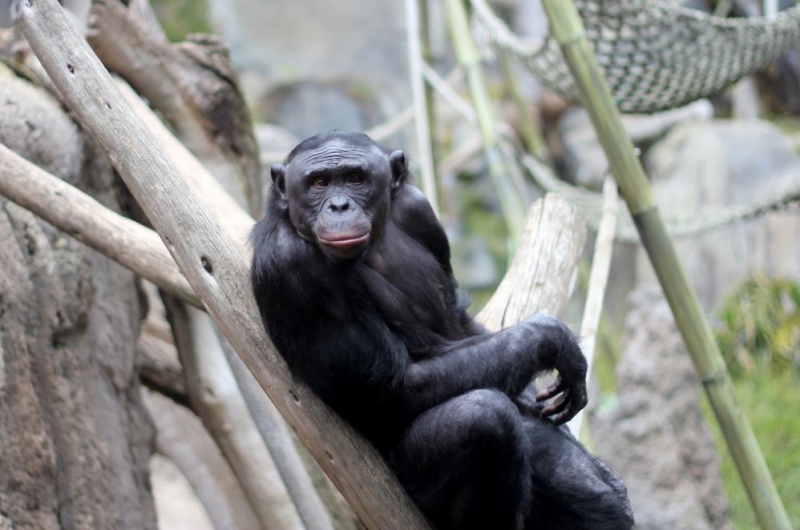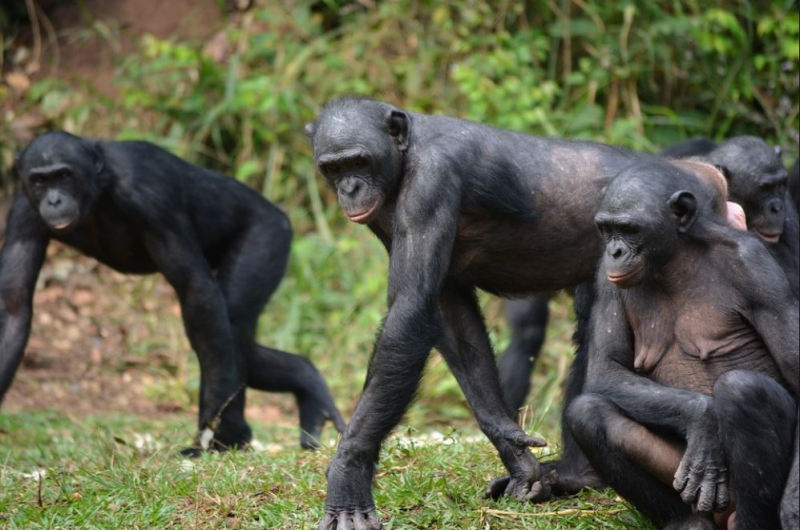The ape chimpanzee and Bonobo, the closest relatives to humans, have a very different social structure and behavior.
Chimpanzees tend to be involved in violent conflict, but Bonobo is not. But new research has shown that Bonobo likes 'troublemakers' more than assistants.
Bonobo can distinguish between good and not at three months of age. Scientific American observed that Bonobo preferred a person more than a person who interfered with him.
Bonobo is less aggressive and less invasive than chimp compared to Bonobo and chimpanzees. Christopher Crufney, a Duke University evolutionary anthropologist, said Bonobo was more like a helper.
Bonobo, sensitive to others
But that's because Bonobo distinguished himself from others. So what about a third party? According to a new study, Bonobo was most tolerant of inhumane colleagues.
Crepeney and Duke University researchers conducted experiments to see if Bonobo values collaborative, social behavior. In the experiment, the researchers used 2D animations to show the characters how they were helping each other, interfering with each other.
In the first experiment Bonobo saw a circle drawing to climb a steep hill. The circle did not climb the hill. In another experiment, the triangle helped the circle climb the hill. In another experiment, the squares pushed the circle down the hill.
In the last control experiment, the circle moved freely up and down the hill. In front of the bonobo seen in all the images, two pieces of apples placed on a triangular and square paper were put out. Surprisingly, only two Bonobos picked apples on triangular paper, and the remaining 11 Bonobos picked apples on square paper.
 |
| ▲ Source = Flickr |
Discrimination ability
In other words, research shows that Bonobo can discriminate against individuals who are antisocial or socially active. Unlike humans, however, Bonobo did not favor pro-social media.
The researchers conducted another experiment. One person plays with the toy and drops, the second person picks up the toy and returns it to the first person. But the third person takes the toy. When three people approached Bonobo with the fruit, Bonobo again ate the fruit that the person who took the toy took.
In spite of the social and idiosyncratic nature of Bonobo, the researchers questioned the preference for antisocial objects. Their theory is that antisocial behavior is related to the dominance that plays an important role in the life of the ape.
The researchers carried out a third experiment. It was also an experiment using 2D animation. When the trapezoid character tried to enter the circle drawn on the ground, the pentagram interrupted it. In another video, triangles and squares moved together in a circle. As with previous experimental results, Bonobo preferred the pentagon, which is a distracter.
 |
| Source: Pixar Bay |
The researchers, who have confirmed that Bonobo is favoring antisocial individuals, said they could not determine whether this tendency was innate or acquired because they had not yet determined what the tendency of the baby Bonobo was.
They added that in future studies Bonobo's reaction to antisocial and dominant individuals should be different.
But Duke University anthropologist Brian Hare says it is not plausible to compare bonobos and chimpanzees based on responses to video-based experiments. Because Bonobo has a possibility to look at a video that a person interprets from a moral point of view.
Crepeny, who is also a researcher in the development and comparative psychology of the Max Planck Institute in Germany, said the results distinguish humans from apes. People avoid antisocial objects. However, because Bonobo is not a human being, he considers that an object that is anti-social behavior is a dominant entity and prefer that entity.
Other studies have shown that Bonobo and human infants also have opposite preferences. To explain these differences, the researchers added that the behavior of bonobos and chimpanzees should be studied more deeply.
![[Issue] ‘Nonviolentist’ Bonobo, in fact, prefer anti-social objects? issue nonviolentist bonobo in fact prefer anti social objects](https://moontore.com/wp-content/uploads/2019/02/issue-nonviolentist-bonobo-in-fact-prefer-anti-social-objects-1200x700.jpg)


